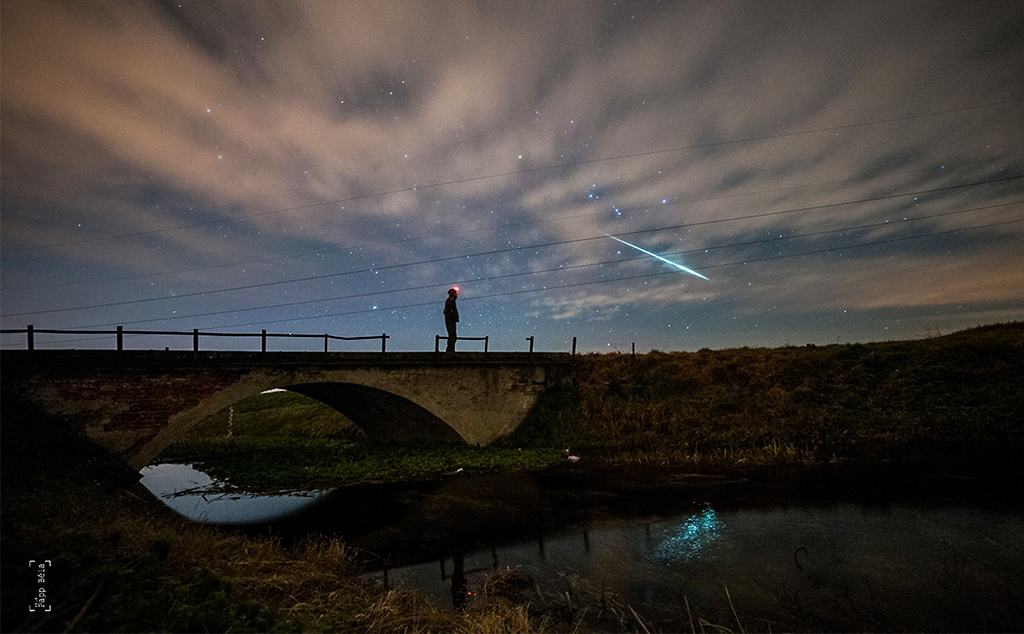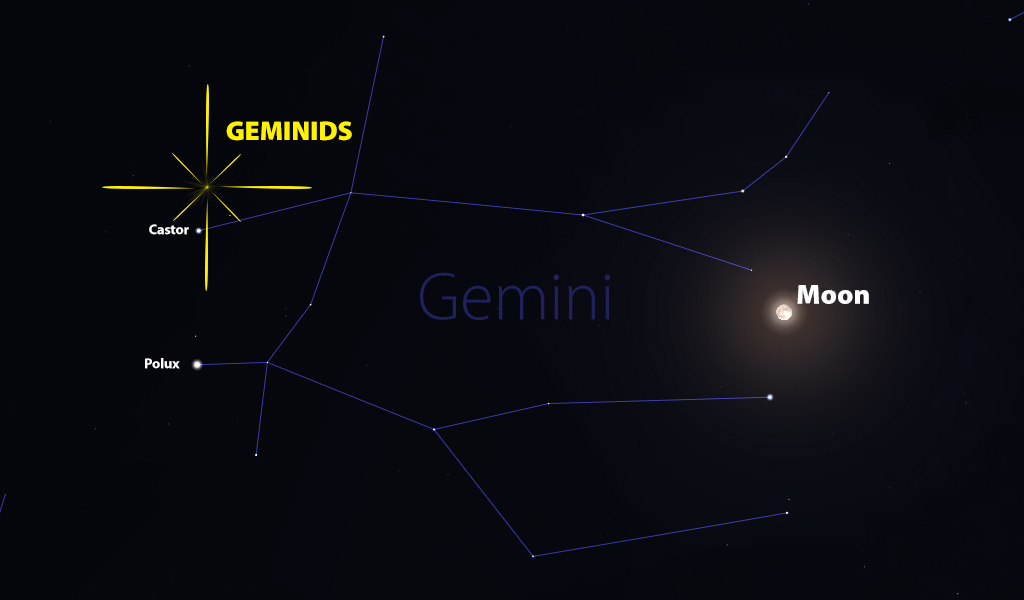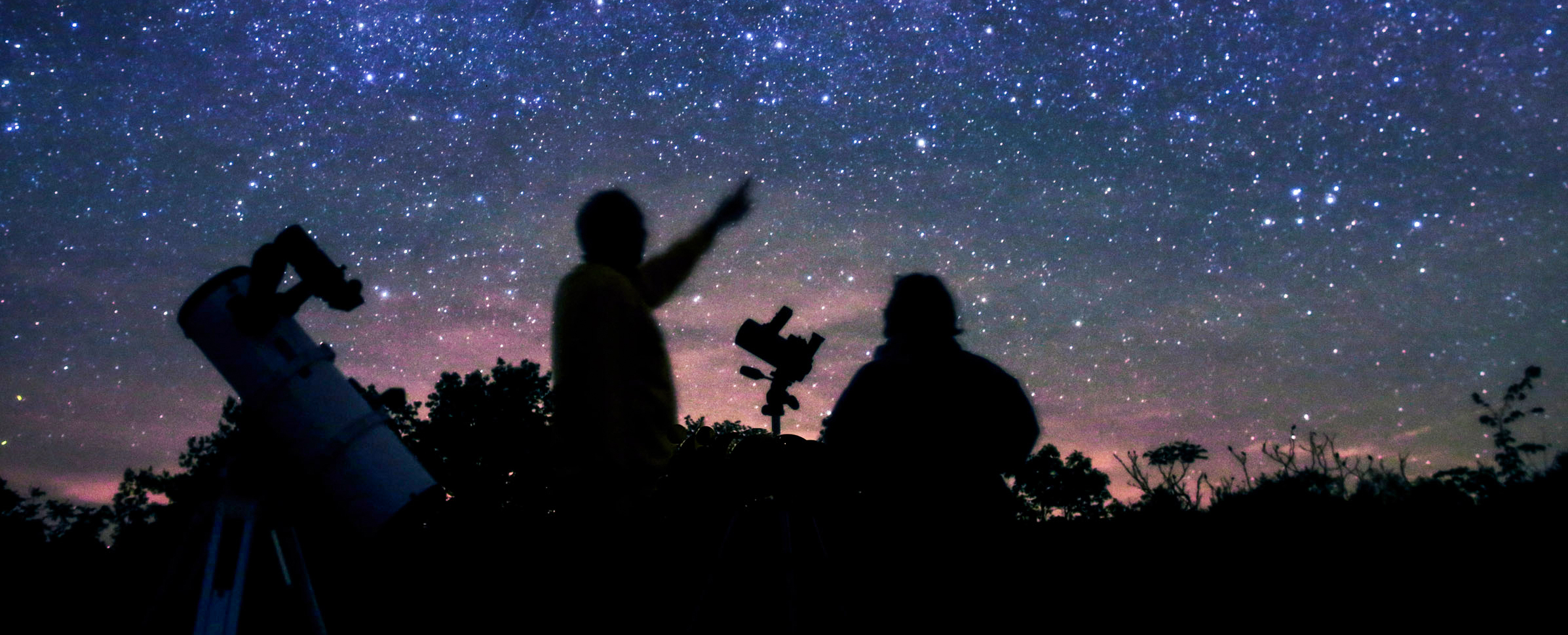
The Geminid meteor shower is the favorite of most meteor observers as it usually provides the strongest display of the year. The Geminids are one of the few annual meteor showers that are active all night long. The radiant (the area of the sky where the meteors seem to come from) is located near the bright star Castor (alpha Geminorum). This star rises in the northeast between 1700 and 1800 (5 & 6pm) local standard time (LST) as seen from mid-northern latitudes. At this time a few Geminid meteors may be seen streaking slowly upward toward the zenith or shooting parallel to the northern or southeastern horizons. These early Geminids are special as the geometry at this time of night only allows them to skim the top of the atmosphere. Therefore these meteors will last longer and will produced longer streaks in the sky compared to Geminids seen later on in the night. These meteors are referred to as “earthgrazers”. The number of meteors seen at this time will be low, but they will be impressive nonetheless.
Unfortunately, also present in the eastern sky at this time will be a brilliant full moon. While a full moon is beautiful in its own right, the bright glare from the moon will obscure most of the Geminid meteors. Since the full moon lies opposite the sun, it will lie above the horizon all night long. Therefore there will be no escaping the bright lunar glare. All hope is not lost though as the brighter Geminid meteors can still be seen, especially in directions opposite the moon where the moonlight is less intense. If you sky is transparent and free from clouds and haze, you still should be able to count at least 25 Geminid meteors per hour on the mornings of maximum activity when the radiant lies highest in the sky (0100-0200 LST).

The exact time of the Geminid maximum is expected anywhere from 0800 Universal Time on December 13 to 0000 Universal Time on December 14. This first time was determined from video data since 1999 and the second time from visual data since 1988. Regardless, both the nights of December 12/13 and 13/14 will produce the best Geminid rates. They won’t be the 75 to 100 per hour seen on moonless nights, but 25 per hour still better than most any other night of the year. So if your skies are clear early next week, super moon or not, bundle up and give the Geminids a chance to produce their celestial fireworks!

The Geminids reappear each year in mid-December. While the 2016 display is spoiled by the bright moon, next year the Geminids will appear under favorable conditions again.
 American Meteor Society
American Meteor Society